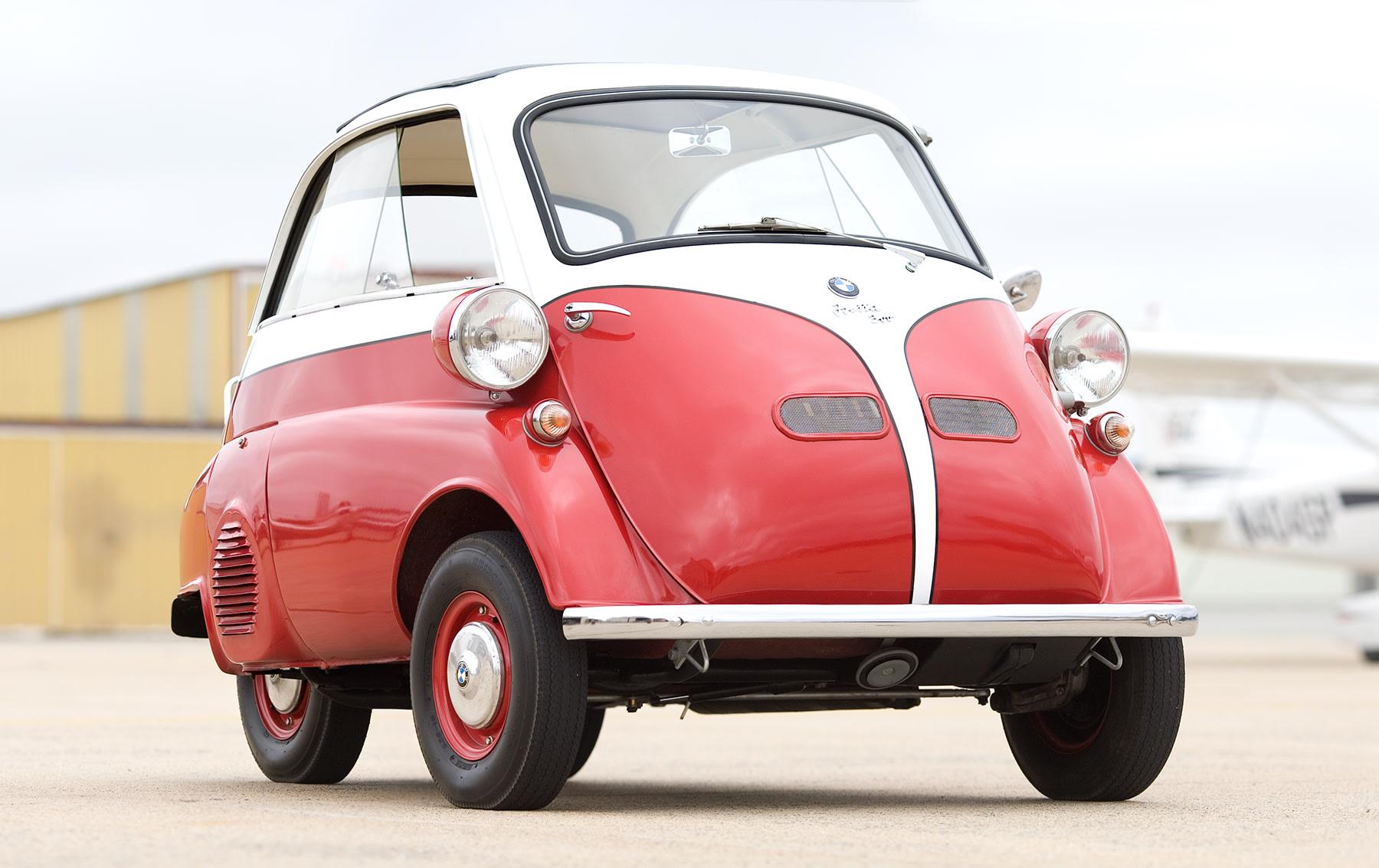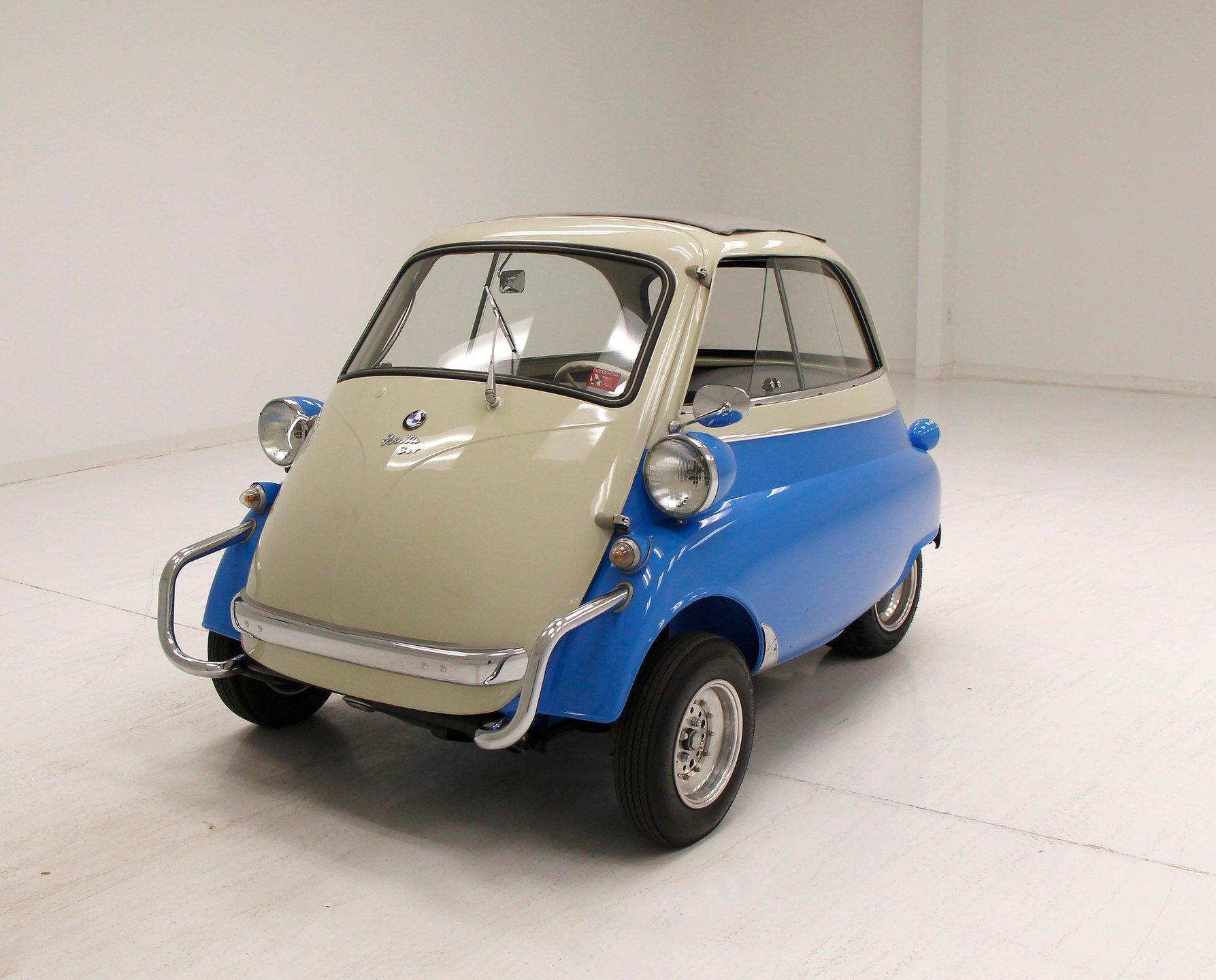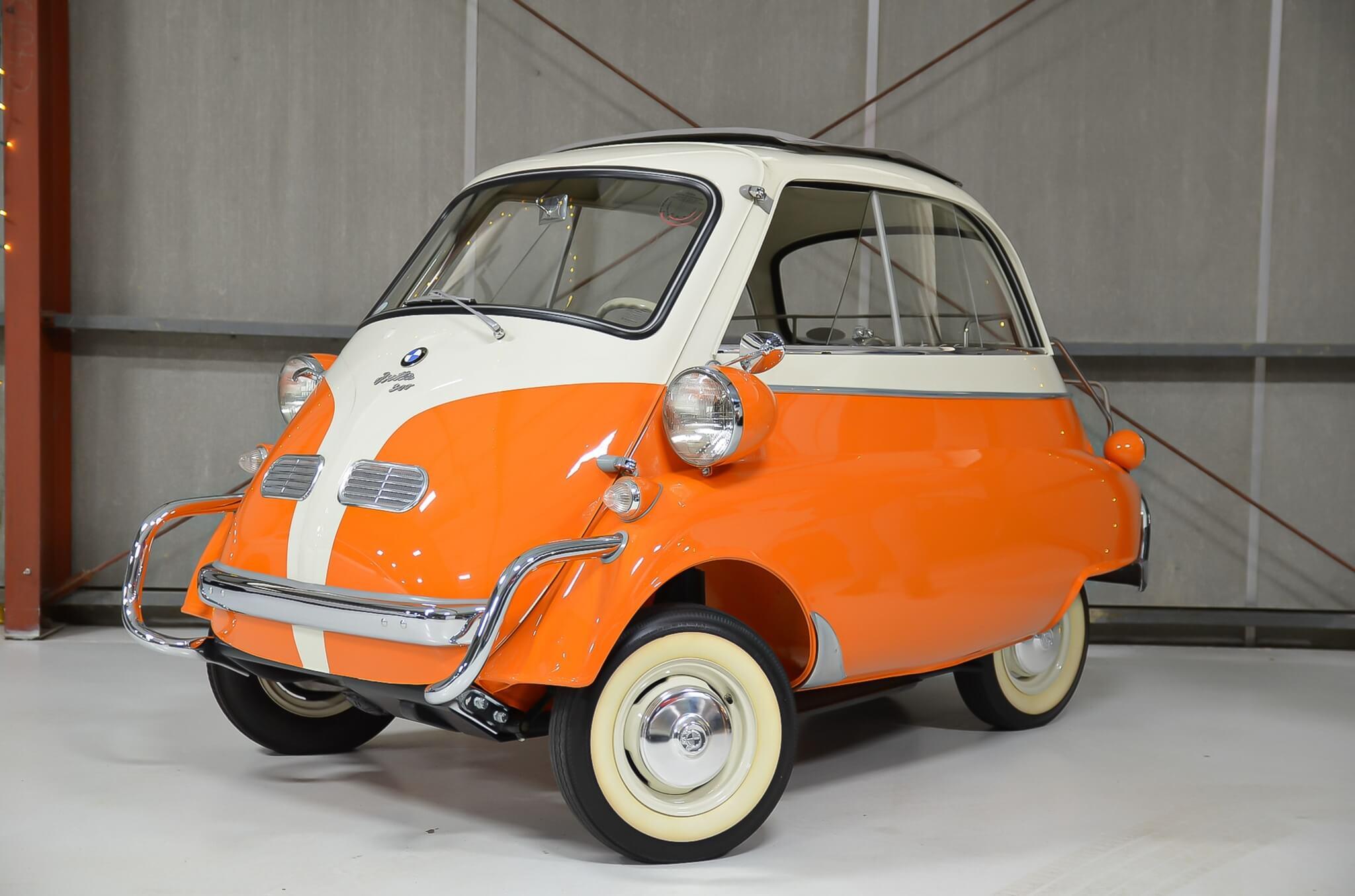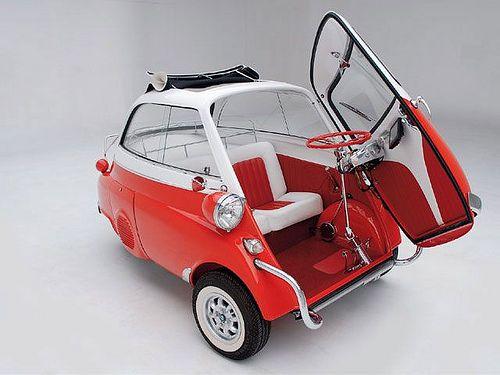1957 BMW Isetta 300
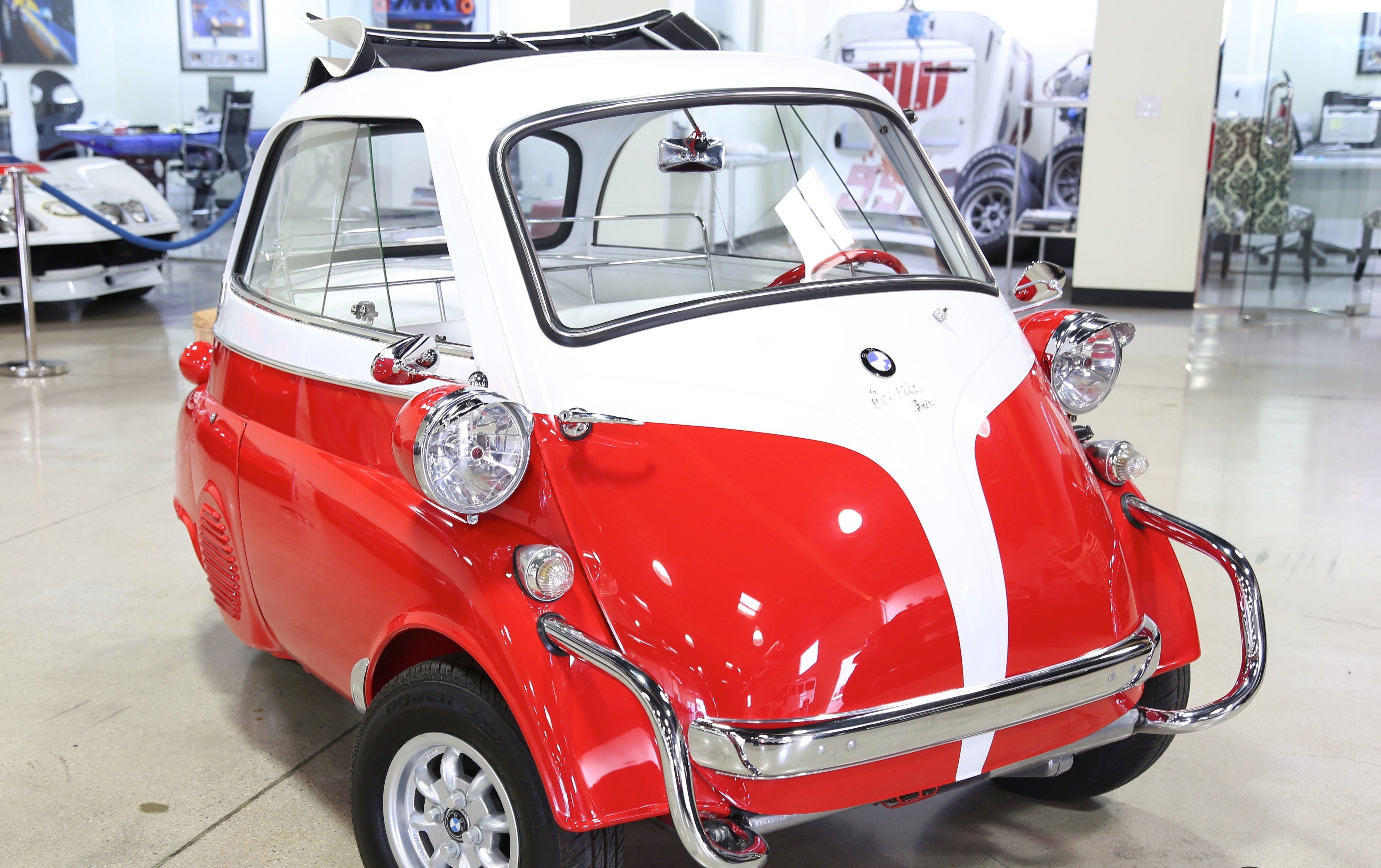
The descriptions of the Classic Cars in the Directory were partly generated or supplemented with the help of artificial intelligence (AI). The content may occasionally not always be entirely accurate or factually correct despite careful checking.
The BMW Isetta 300, produced from 1955 to 1962, was a microcar that helped to revolutionize the automobile industry. This tiny, egg-shaped vehicle was renowned for its unique design, superb gas mileage, and excellent maneuverability, making it an ideal car for city drivers. The technical specifications of the BMW Isetta 300 of 1957 were particularly noteworthy, and they continue to fascinate car enthusiasts to this day.
The BMW Isetta 300 was a three-wheeled vehicle that featured a bubble-type canopy door that opened from the front, giving the driver and passenger unparalleled access to the interior. The Isetta 300 was powered by a 298cc, air-cooled, single-cylinder engine located in the rear of the car, which produced an impressive (by microcar standards) 13 horsepower. The car was equipped with a four-speed manual transmission, although there was no reverse gear; instead, the driver had to manually push the car backwards with the help of a handle.
One of the most remarkable features of the BMW Isetta 300 was its fuel efficiency. Despite its small size, the car could reach a maximum speed of 53 miles per hour, and it could travel up to 50 miles on a single gallon of gasoline. This made the Isetta 300 an extremely affordable car to drive, particularly during the 1950s, when fuel prices were much lower.
The suspension of the BMW Isetta 300 was another impressive feature of the car. The front suspension was a single-wheel, parallelogram-arm system, while the rear suspension consisted of a swing axle with trailing arms. This design allowed for a surprisingly smooth ride, even on bumpy city streets. The car was also equipped with 10-inch diameter wheels, which were much larger than those typically found on other microcars of the era. This gave the Isetta 300 a stable and secure ride, even at high speeds.
Inside the car, the BMW Isetta 300 was surprisingly spacious, given its small exterior. The cabin was accessed through the front door, which, when opened, revealed a comfortable bench seat for the driver and passenger. The car was equipped with a simple dashboard that included a speedometer, fuel gauge, and temperature gauge. There was also a gear indicator located on the floor, which helped the driver to keep track of the car's gear position.
In summary, the BMW Isetta 300 of 1957 was a triumph of engineering and design. Its unique bubble door, fuel-efficient engine, and smooth suspension made it an ideal car for city drivers, while its spacious interior and comfortable ride made it a pleasure to drive. Even today, over 60 years after its production, the Isetta 300 remains a beloved classic car, admired for its technical excellence and distinctive styling.
Milestones
- BMW Isetta 300 was first introduced in 1955 as an updated version of the Isetta 250. - In 1957, the Isetta 300 received upgrades to its engine, increasing its horsepower from 12 to 13. - The Isetta 300 was marketed as a fuel-efficient and affordable car, especially popular in post-war Europe. - The car's iconic design, featuring a single front door and bubble-like shape, made it instantly recognizable. - The Isetta 300 was produced until 1962, with a total of approximately 161,728 units built. - The car became a cultural icon and is often associated with the economic boom in Germany in the 1950s. - The Isetta 300 continues to hold a place in automotive history as an innovative and unique vehicle.Technical
- Engine: 298 cc, air-cooled, two-stroke, single-cylinder, producing 13 horsepower - Transmission: 4-speed manual - Top speed: 85 km/h (53 mph) - Fuel consumption: 3.5 L/100 km (67 MPG) - Acceleration: 0-50 km/h (31 mph) in 20 seconds, 0-80 km/h (50 mph) in 65 seconds - Length: 2.29 m (7 ft 6 in) - Width: 1.38 m (4 ft 6 in) - Height: 1.37 m (4 ft 6 in) - Wheelbase: 1.50 m (4 ft 11 in) - Curb weight: 350 kg (772 lb) - Suspension: front and rear independent suspension with coil springs - Brakes: drum brakes on all four wheels - Steering: rack-and-pinion steering - Tires: 4.40 x 10 inch tires - Fuel tank capacity: 13 litres (3.4 US gal) - Production: 1955-1962 (over 160,000 units produced)